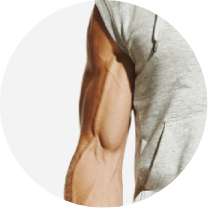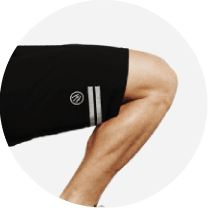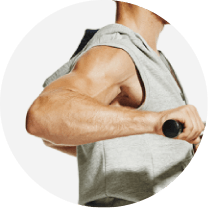28-Days-to-Lean Meal Plan
With the right plan and the right discipline, you can get seriously shredded in just 28 days.
Read article

With the right plan and the right discipline, you can get seriously shredded in just 28 days.
Read article

At age 62, "Big Bill" shares his wisdom to dominate one of the ultimate strength marks.
Read article
Follow these fit women we're crushing on for inspiration, workout ideas, and motivation.
Read article

Most vertical jump training programs use repetitive jumping, special shoes and stretching techniques to improve jumping. All of those techniques have a legitimate place in training the legs but jumping is a movement that uses more than just the legs. Jumping is a full body movement and for that reason it is important to train the entire body for jumping.
In training, you train movements, not just muscles. Jumping is a power movement-a function of strength and speed that can be further enhanced through stability. If you are doing stability, strength, speed and power training, there is no doubt you will get in some of the best shape of your life and improve your vertical jump!
Some of the stability that is involved in most vertical jump training uses single-leg exercises and balance devices, such as bosu balls and dyna-discs. These are great, but the best way to improve overall stability is to train the core. This doesn’t mean doing sit-ups until you cramp, this means training the core muscles that help stabilize your lower back and hips (lumbo-pelvic hip complex). Some of those muscles are the abdominal muscles that you like to show off at the beach and some of them are smaller muscles that you can’t see but are extremely important to jumping. Additionally, these same muscles will enhance your ability to perform certain strength, speed, and power exercises that are important to jumping.
The power that your legs generate in the jumping movement is channeled though your core and transferred to your upper extremities as you leave the ground and reach for your goal height. If the core isn’t strong enough, you wont maximize your jump; as power generated in the legs will be lost and not efficiently transferred to your arms.
Speaking of arms, these are very important to jumping as well. Jumping actually involves a movement and a countermovement. The countermovement is a backward swing of the arms as well as a squatting movement of the legs. This loads the energy that has to quickly be converted into the jumping movement to boost you off the ground and propel you into the air. As you can see there’s a lot involved in jumping-full body stability, strength, speed and power!
Training to improve any of these components of jumping will yield increases in your jumping ability and also your overall fitness level. Combining all of the aforementioned components of the jumping movement into your weekly workout routines will dramatically improve your jumping ability and fitness level. If you just want results, keep doing what you’re doing; but if you want dramatic results, try the following workout program for the next 6 weeks. When you’re done, you’ll be stronger, faster, bigger, and jumping higher!
NOTE: You will workout on days 1, 2, 4, and 5. You will rest on days 3, 6, and 7. Push yourself in these workouts — use weights that will challenge you and move the weight as fast as possible while maintaining proper form and control. The exercises are meant to be performed as super sets. Limit your rest between sets to 2 minutes. Also, be sure to warm up for 5-10 minutes prior to your workouts and stretch after. Go hard or go home!


Celebrity Trainer Ash Bailey's program will have you beach ready in no time.

The workout is part of Alo Moves trainer Gio Merlino's successful 8-Week Burn & Build program.

Personal trainer Laura Lee Crabbe says building strength is about keeping it simple.






